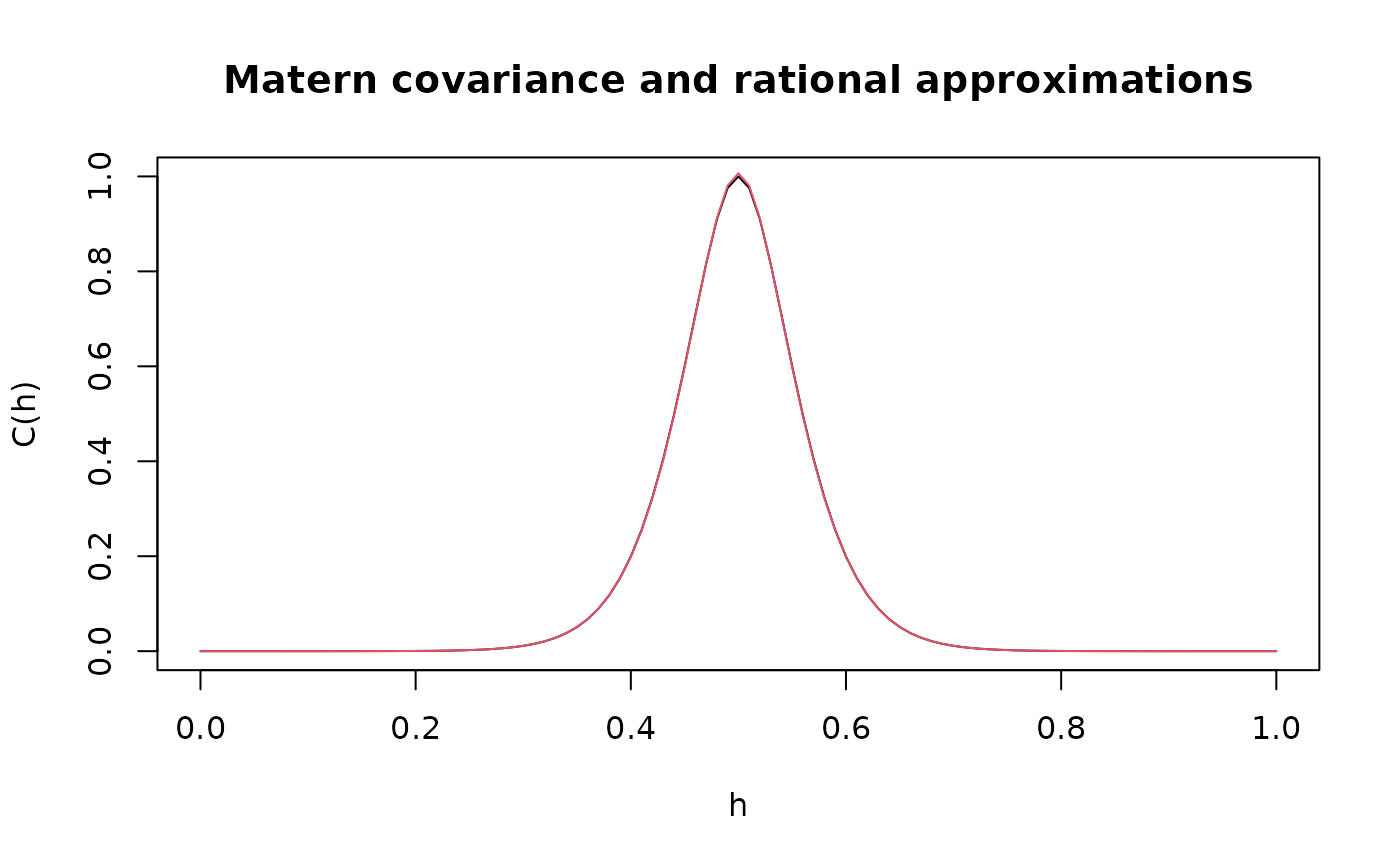
Precision matrix of the covariance-based rational approximation of stationary Gaussian Matern random fields
Source:R/inla_rspde.R
rspde.matern.precision.Rdrspde.matern.precision is used for computing the
precision matrix of the
covariance-based rational SPDE approximation of a stationary Gaussian random
fields on \(R^d\) with a Matern covariance function
$$C(h) = \frac{\sigma^2}{2^(\nu-1)\Gamma(\nu)}(\kappa h)^\nu
K_\nu(\kappa h)$$
Usage
rspde.matern.precision(
kappa,
nu,
tau = NULL,
sigma = NULL,
rspde.order,
dim,
fem_mesh_matrices,
only_fractional = FALSE,
return_block_list = FALSE,
type_rational_approx = "brasil"
)Arguments
- kappa
Range parameter of the covariance function.
- nu
Shape parameter of the covariance function.
- tau
Scale parameter of the covariance function. If sigma is not provided, tau should be provided.
- sigma
Standard deviation of the covariance function. If tau is not provided, sigma should be provided.
- rspde.order
The order of the rational approximation
- dim
The dimension of the domain
- fem_mesh_matrices
A list containing the FEM-related matrices. The list should contain elements c0, g1, g2, g3, etc.
- only_fractional
Logical. Should only the fractional-order part of the precision matrix be returned?
- return_block_list
Logical. For
type = "covariance", should the block parts of the precision matrix be returned separately as a list?- type_rational_approx
Which type of rational approximation should be used? The current types are "brasil", "chebfun" or "chebfunLB".
Examples
set.seed(123)
nobs <- 101
x <- seq(from = 0, to = 1, length.out = nobs)
fem <- rSPDE.fem1d(x)
kappa <- 40
sigma <- 1
d <- 1
nu <- 2.6
tau <- sqrt(gamma(nu) / (kappa^(2 * nu) * (4 * pi)^(d / 2) *
gamma(nu + d / 2)))
range <- sqrt(8 * nu) / kappa
op_cov <- matern.operators(
loc_mesh = x, nu = nu, range = range, sigma = sigma,
d = 1, m = 2, compute_higher_order = TRUE,
parameterization = "matern"
)
v <- t(rSPDE.A1d(x, 0.5))
c.true <- matern.covariance(abs(x - 0.5), kappa, nu, sigma)
Q <- rspde.matern.precision(
kappa = kappa, nu = nu, tau = tau, rspde.order = 2, d = 1,
fem_mesh_matrices = op_cov$fem_mesh_matrices
)
A <- Diagonal(nobs)
Abar <- cbind(A, A, A)
w <- rbind(v, v, v)
c.approx_cov <- (Abar) %*% solve(Q, w)
# plot the result and compare with the true Matern covariance
plot(x, matern.covariance(abs(x - 0.5), kappa, nu, sigma),
type = "l", ylab = "C(h)",
xlab = "h", main = "Matern covariance and rational approximations"
)
lines(x, c.approx_cov, col = 2)
